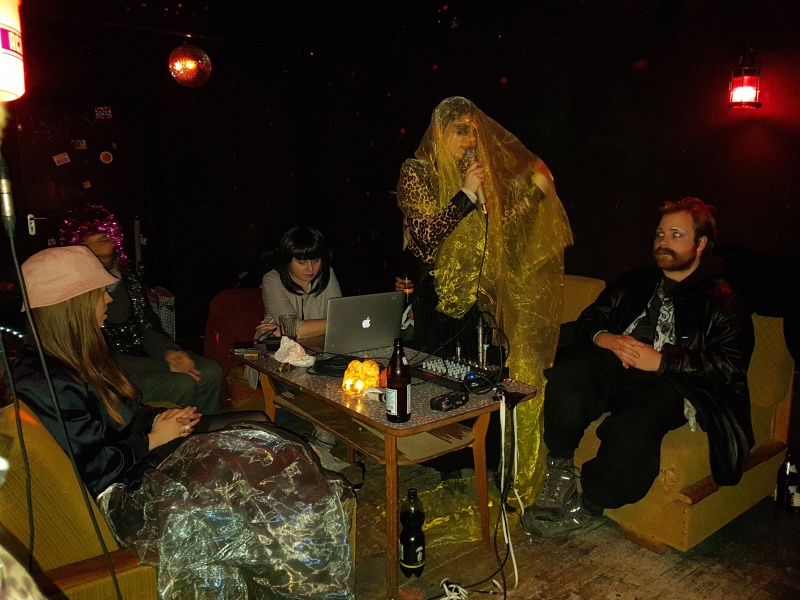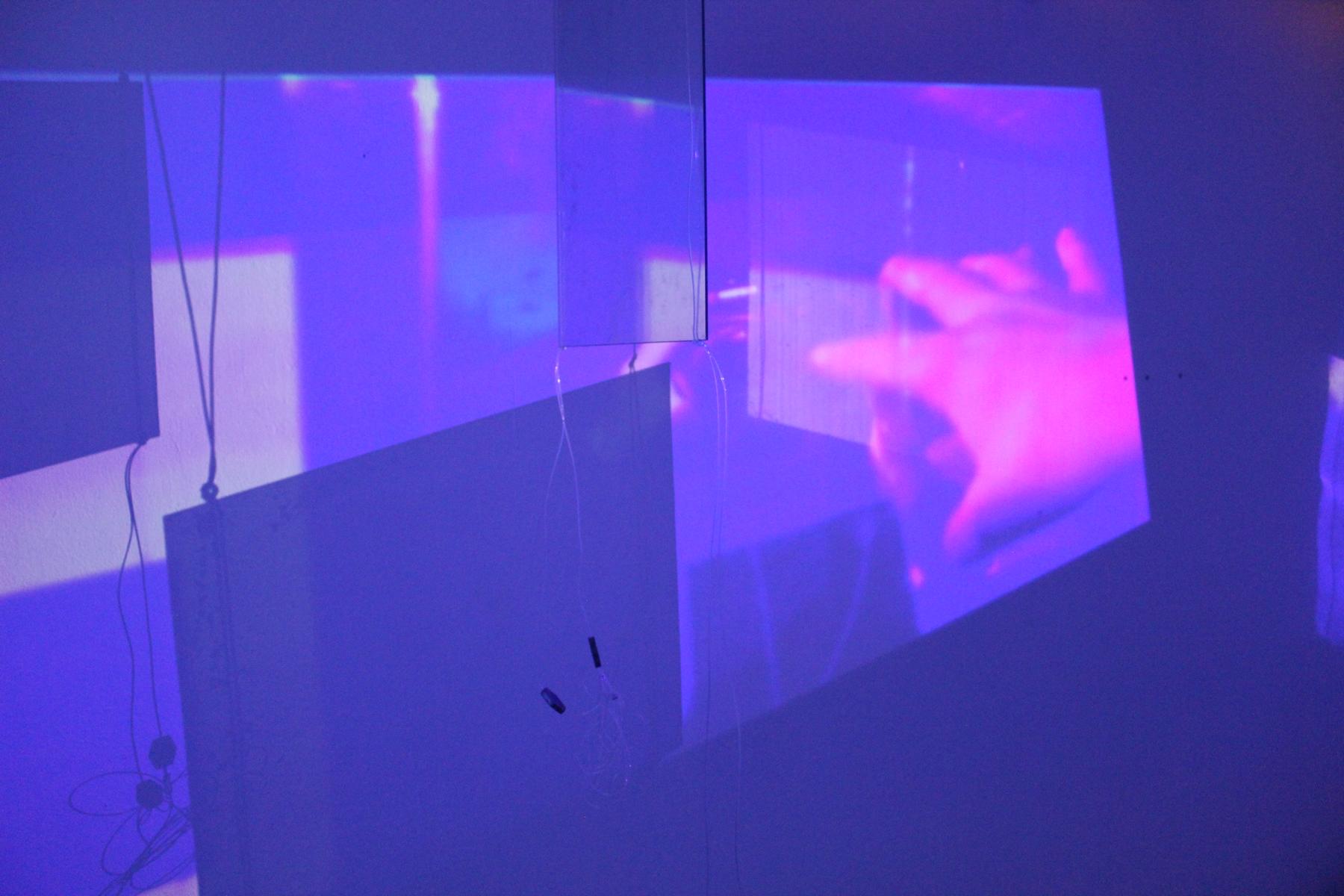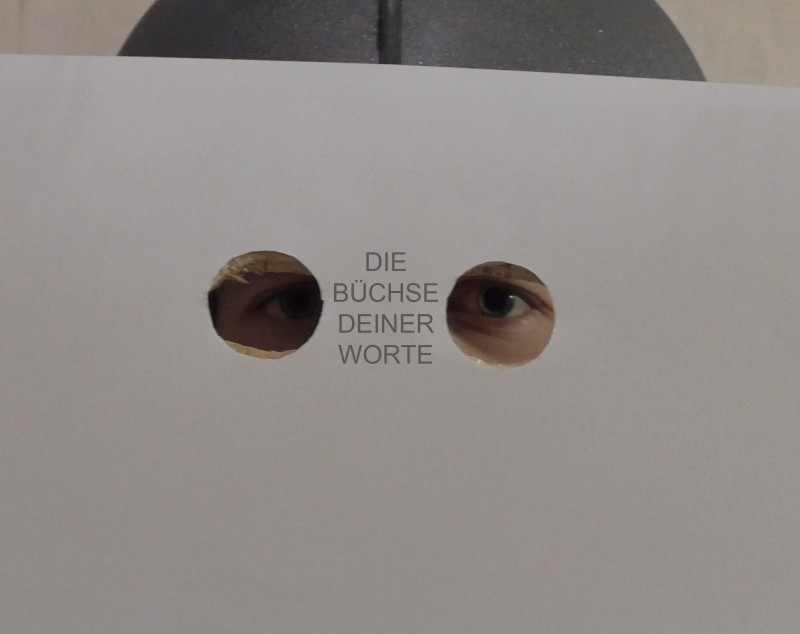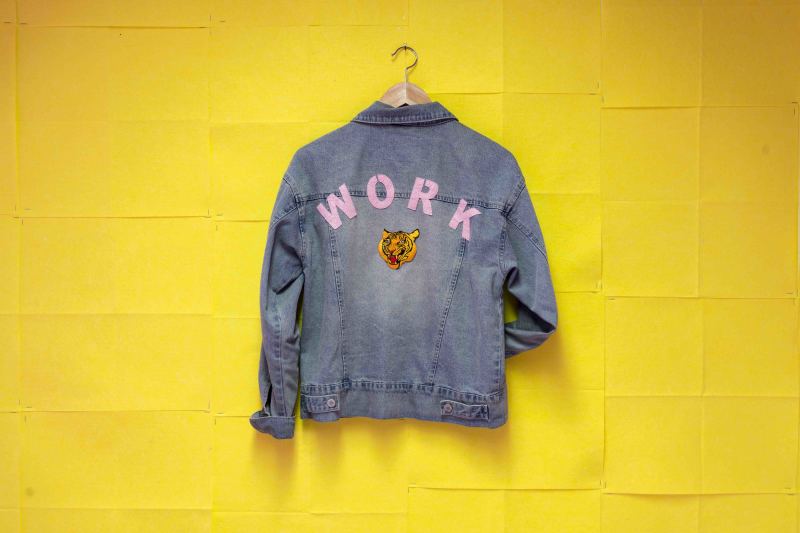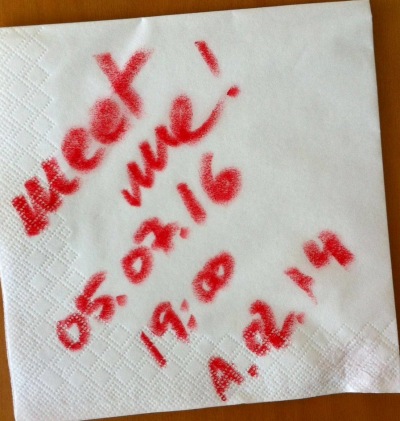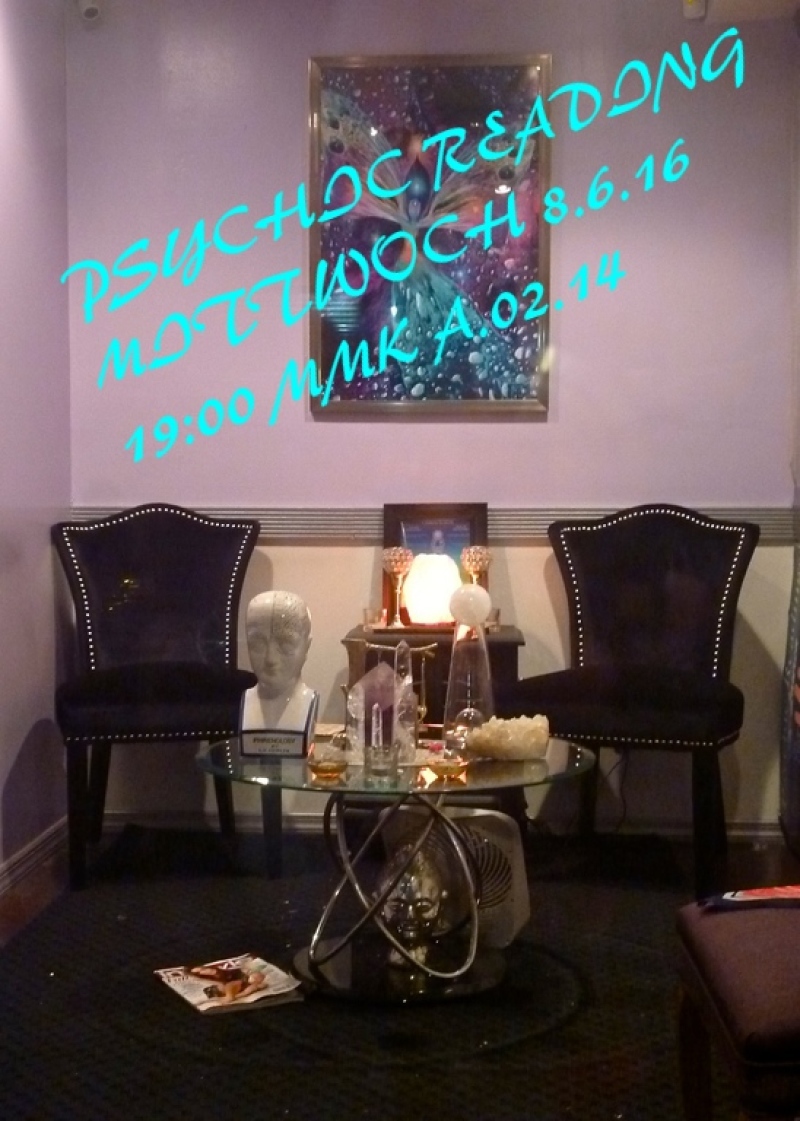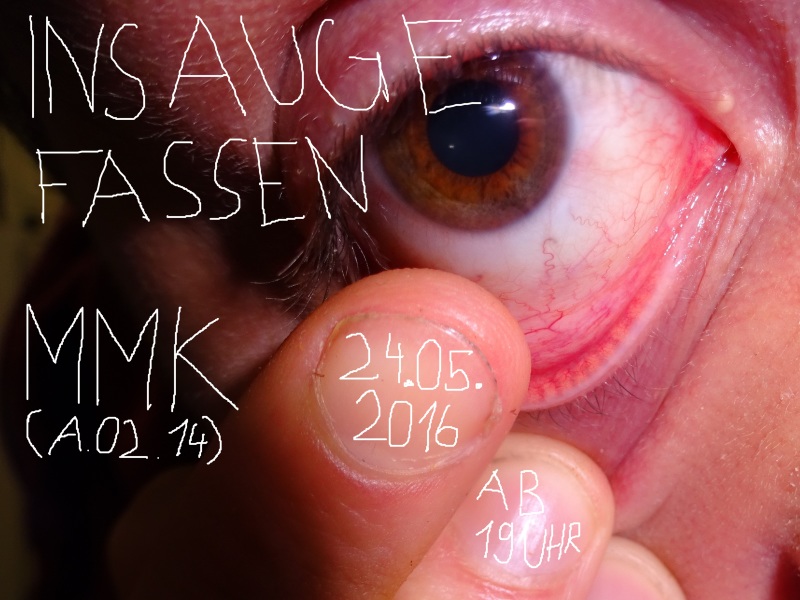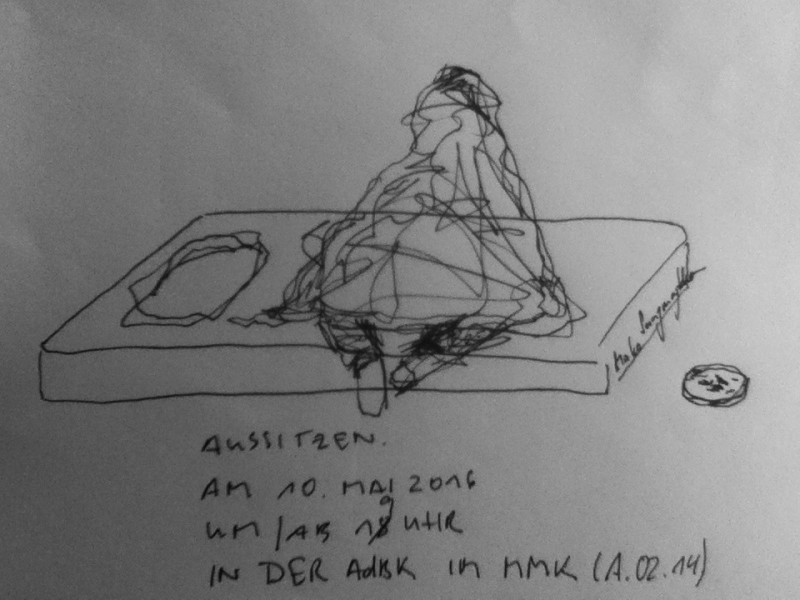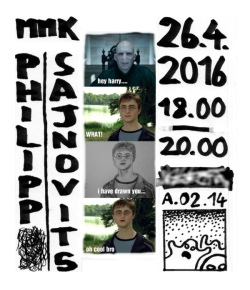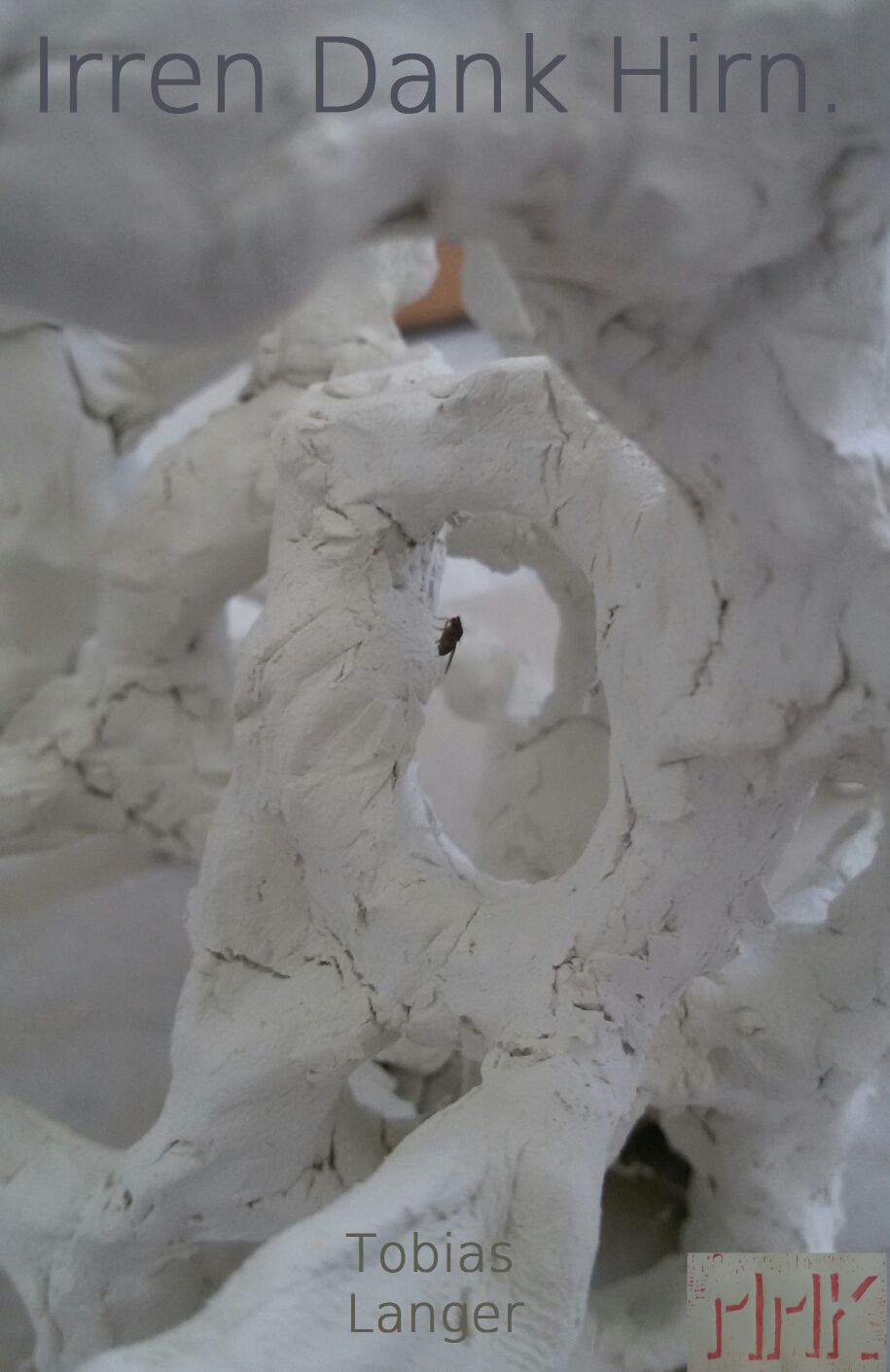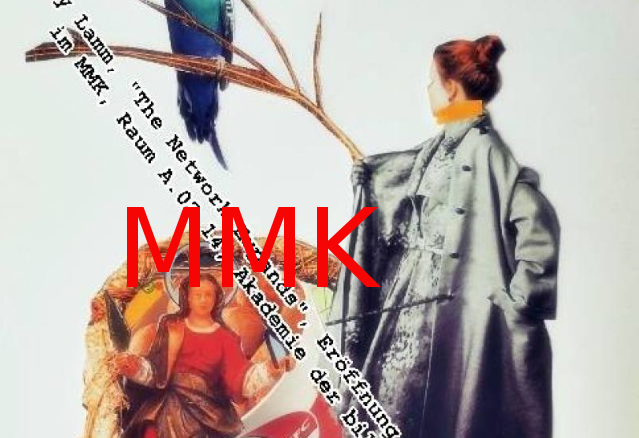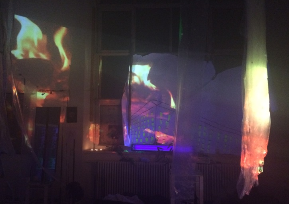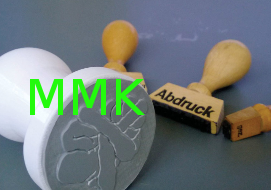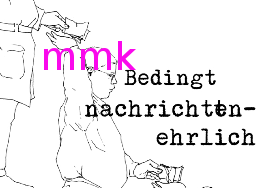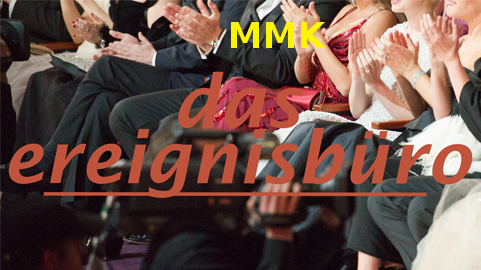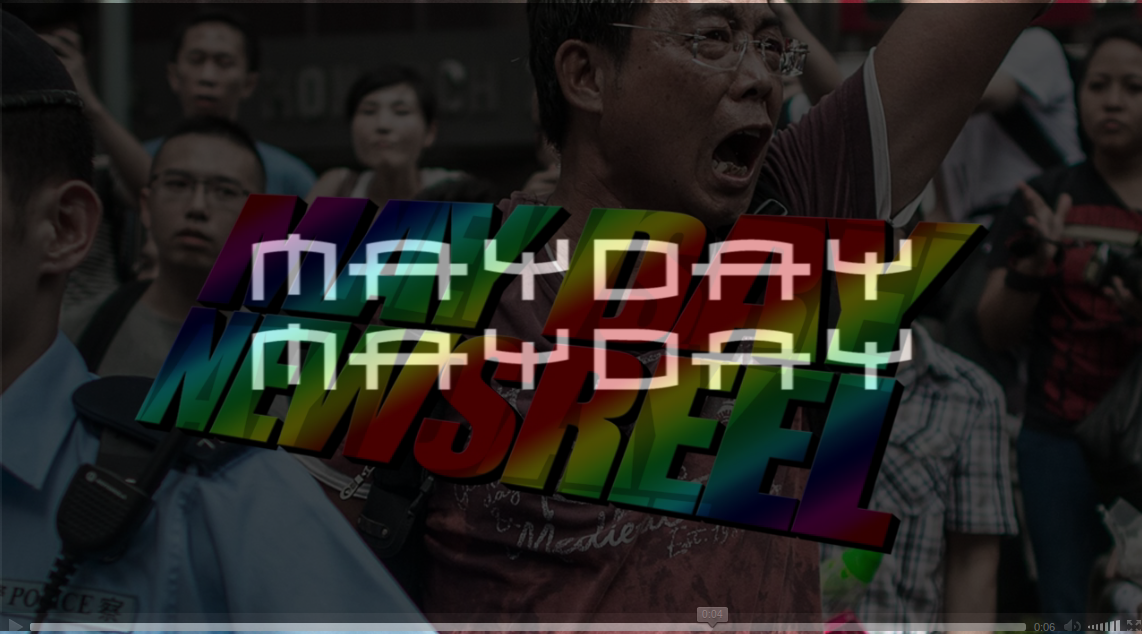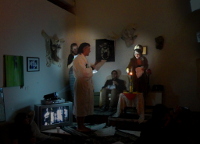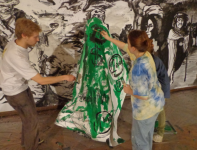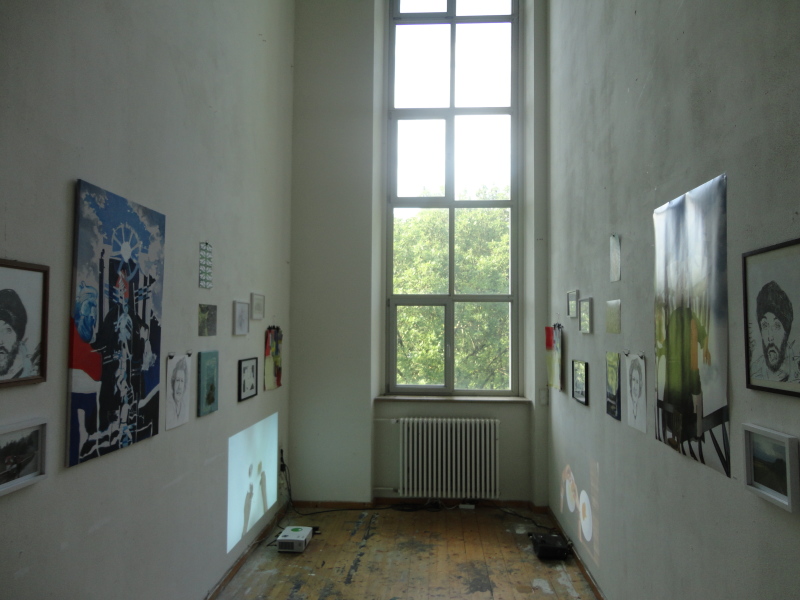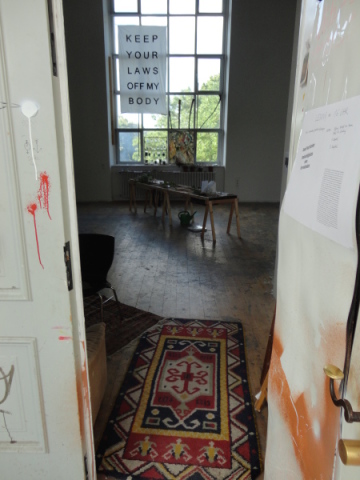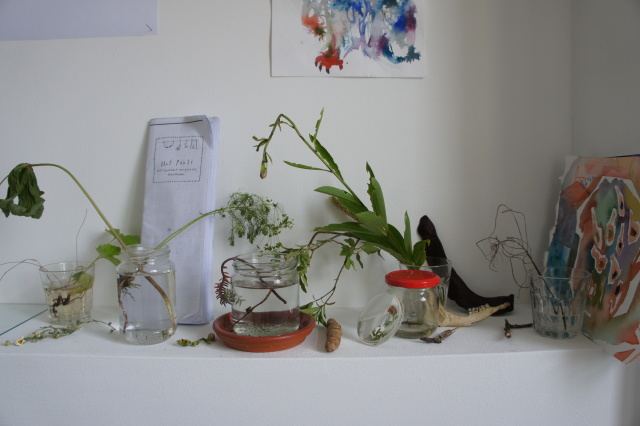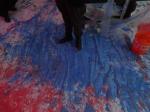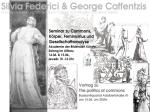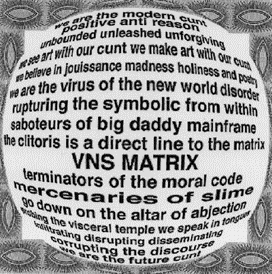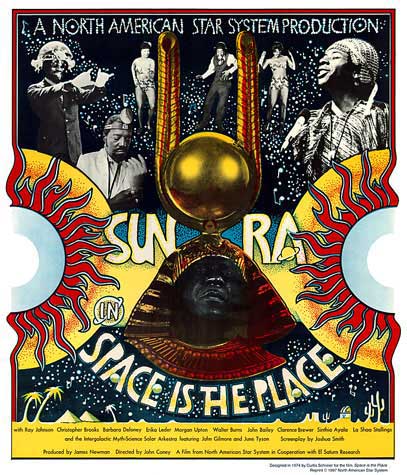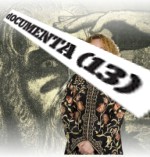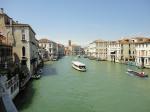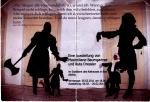ON THE GROUND
LONDON
MELANIE GILLIGAN
WHEN REVIEWING THE PAST YEAR IN LONDON, it's tempting simply to start with the Tate Triennial, London's recently instituted showcase of contemporary art in the United Kingdom. But to do so would provide insight less into any local trend than into a veritable condition of art-making everywhere. Triennial curator Beatrix Ruf (on loan from her post at the Kunsthalle Zurich) took appropriation as her subject, which she loosely defined in the catalogue as "the reusing or recasting of cultural materials"�hardly a uniquely British approach. That said, the technique was in ample evidence throughout the Tate galleries, whether in Jonathan Monk's use of found, anonymous drawings from the '20s and '30s; Daria Martin's film Wintergarden, 2005, based on the ancient myth of Persephone and set in a modernist pavilion; Pablo Bronstein's performance inspired by Minimalist dance, executed with postmodernist staging; or Cosey Fanni Tutti's work from the '70s ("New British Art," indeed), in which she takes up photos of herself modeling in porn magazines. In fact, this triennial was a smorgasbord of appropriation, spanning the broad gap in practice between Ian Hamilton Finlay's conservative, classicist sculptures and paintings and John Stezaker's engrossing found-image collages of forests interpolated into human faces�to say nothing of Lucy Mc Kenzie's Untitled, 2005, a pointed refiguring of comic-book porn into the image of a painting hanging in a restaurant above an impassive diner.
Yet a real clue to artistic production today was made evident in this apparent curatorial hopscotch: Part of the triennial's premise was the idea that every era's art has been engaged in this kind of recycling�a suggestion that here risked recasting appropriation as merely a recombinatory process. Largely gone, it seems, is the critical character of the "Pictures" generation, whose quotations of commercial culture questioned social and economic representations. As argued by catalogue essayist Jan Verwoert, the mourning of history's end that attended postmodernism�an ending whose "dead language" gave rise to the pervasive artistic use of allegory in appropriation�has recently given way to an "excessive presence of history" felt by artists, who subsequently desire to reanimate the "dead" and leave open the possibility for innovation (what Ruf called "new narratives" and "fresh meanings"). In other words, artists have a greater awareness of the "unsuspected effects and affects" that might result from employing materials from the past and therefore evince a purportedly novel, "performative" approach in orchestrating those materials' return. However, in the Tate Triennial, as in the broader global trend of appropriation, the works that quote in compelling and relevant ways were outnumbered by others steeped less in matters of representation than of reproduction�or more accurately, production. Many artists, that is, are freely partaking in a realm of obliging semiotic abundance (some without even perfunctory, vestigial connotations of criticality), such that appropriation seems a remarkable catalyst for the continuation and worldwide proliferation of art. Earlier appropriation strategies, if not antagonistic to commodity culture, nevertheless explored the conditions of its all-consuming nature�whereas nowadays appropriation seems increasingly at its service.
In this regard, then, a consideration of the Tate Triennial might provide a crucial insight into London, whose well-documented, yet unprecedented, proliferation of commercial galleries reflects with ever more clarity a global explosion in artistic productivity and�along with growing popular interest in contemporary art�an expanding market that seems perfectly able to absorb this increased production. Now even public institutions are going into overdrive, announcing numerous site and program overhauls: This year, only six years after opening, Tate Modern announced an eleven-story addition to its building, a 60 percent increase in size; the Whitechapel Art Gallery is annexing a neighboring public library; and the National Film Theatre, traditionally a cinema, is opening a gallery for film and video installation.
This kind of expansion is very much on people's minds in London, and if the critical assessment of commerce has perhaps assumed less of a role in art, this criticality is perpetually disinterred in talks held by art institutions. One might even argue that the growth of the art world here has been mirrored by an increasing number of events trying to make sense of the broader implications. Nowhere was this more apparent than at the Serpentine Gallery, where new arrival Hans-Ulrich Obrist�a figurehead of sorts for art's worldwide expansion (his recent books of interviews speak volumes)�hosted discussions and screenings in what writer Claire Bishop recently called the "speech bubble," an architectural pavilion built by Rem Koolhaas next to the gallery in Kensington Gardens. Consisting of a massive inflatable orb hovering above a circular seminar room (not a few Londoners remarked upon its seeming an appropriate home for hot air), the building provided the setting for Obrist's highly publicized "Interview Marathon Series"�the first of which was an exhausting twenty-four-hour occasion featuring a roster of more than sixty local and internationally known figures such as Brian Eno, Peter Saville, Doris Lessing, and Hanif Kureishi, all interviewed by high-octane communicators Obrist and Koolhaas.
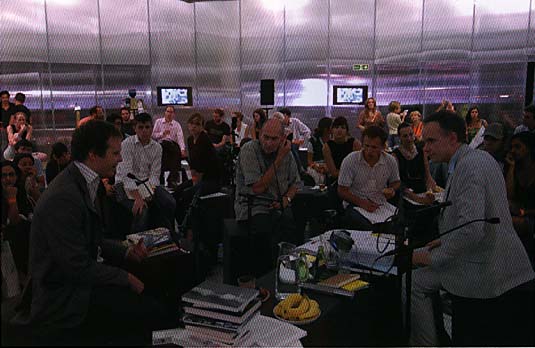
Obrist at Serpentine
More to my point (and less exhausting) was a second, shorter "Post-Marathon" coinciding with the Frieze Art Fair and billed as an examination of corporate sponsorship of cultural events, business management's use of critical theory, and hedge-fund billionaire investment in art. The questions posed in a press release for the "art, money, and power" event were provocative enough: "Is this interest [from the corporate and financial sector] shaping a new cultural and economic scenario?" and "Why are finance and capital so interested in the ... cultural industry?" Unfortunately, the answers�by world-renowned artists, academics, and entrepreneurs such as Jeff Koons, former Art Basel director Samuel Keller, Frieze's Amanda Sharp and Matthew Slotover, Iwan Wirth of Hauser & Wirth, Tobias Meyer of Sotheby's, and designer Miuccia Prada� were often the exact opposite of provocative, playing a rhetorical game of hot potato. (To wit: "Money has never mattered to me"; "If I had wanted to really make money, I would have gone into another business.") Several among those interviewed were on Art Review's Power 100 list, but while they were well acquainted with the holy trinity of art, money, and power, few seemed equipped (or at least inclined) to analyze its inner workings, meaning that in lieu of "live research" (as promised by the Serpentine) there were only occasionally informative, often humorous by-products of the discussion.
Asked if he had any projects that he has yet to realize, Keller replied that his ideal future endeavor would be based on his first Art Basel Miami Beach�canceled in the wake of 9/11. Many art-world figures and collectors had traveled to Miami nevertheless, and, staying in the hotel rooms they had prebooked, they enjoyed a leisurely few days networking unencumbered by a literal object�that is, art�for their activities. (A worrisome twist on relational artistic practices?) Dan Graham abandoned the Q&A format to deliver a short diatribe against Koolhaas's architecture, punctuated by an attack on the professionalization of art: "There's a disease, and it's called Goldsmiths." (A memorable one-liner, for certain, but is it really fair to blame the prescriptive quality of much art today solely on education?) And Koons, answering Koolhaas's inquiries about recent commissions for powerful art patron Francois Pinault, waxed poetic about a sculpture for Pinault's Palazzo Grassi in Venice inspired by the Incredible Hulk�a figure Koons, with an almost spiritualist bent, called a "guardian" for the building. When Koolhaas asked the artist how many people were in his employ, Koons gave a number exceeding that of all Hauser & Wirth's businesses internationally.

Jeff Koons
The interviewers' questions were generally cast in terms of commerce's interest in culture, and yet the interviews might have more compellingly brought up art's instrumentalization in the public sphere, especially in the UK. Today not only is the art world infused with cash and subsequently enmeshed with the mass-market public, but art is used also by the state to encourage economic activity and social cohesion, and even to deal with the decreasing governmental provision of social services. The novel hyperpresence of art in everyday life here is, of course, immediately discernable in the gargantuan, interactive, art-as-entertainment ethos of Tate Modern�the most popular contemporary museum in the world, with four million visitors each year�as well as in events such as the Beck's Futures prize at London's Institute of Contemporary Arts, which recently incorporated public voting terminals. (The ICA's Jens Hoffmann called the latter an invitation for people "to contemplate the visual arts in general and to give them a voice in the discussion surrounding contemporary art.") But as important as it is for these institutions to expand the consumer base, art has a new, more significant status as a fix-all tool for society at large and a proxy for now-vanished public forums. For instance, a reality TV program soon to be on Channel 4 allows participants to nominate artists to build a public art piece. A Soviet-scale, state-funded performance such as this year's Margate Exodus provides a caricatured example of the prevalent "socially engaged" community projects springing up with the decline of the welfare state: Appealing for the better treatment of people seeking asylum in the UK, the work involved a community pageant-cum-film shoot with local volunteers constructing an eighty-two-foot-tall Antony Gormley sculpture from the "detritus of consumer society."
It's a perfect example of how the state uses art as an exercise in community cohesion and a benign form of autocritique, giving cosmetic aid to the underprivileged. In such cases artists often unwittingly prep these places for the oncoming waves of gentrification; elsewhere the effort is more overt, taking the form of "creative hubs" (modeled after the former East London artist colony Shoreditch) that are financially supported by the government. It is, however, also worth noting that certain artists are addressing these developments in their own work. At the risk of doing what most year-end surveys do�identify the young up-and-comers�I would like to point to London-based German artist Anja Kirschner's Polly II: Plan for a Revolution in Docklands, 2006, which resists the assumption that aesthetic or political benefit necessarily arises simply from educating viewers about gentrification or from working with communities. Screened in April at the Whitechapel Project Space, this video continues a saga begun in John Gay's 1728 play The Beggar's Opera: Part sci-fi, part Lehrstiick, the film depicts a futuristic East London submerged by floodwaters that leave scant land and resources for the surviving working-class residents, many of whom turn to piracy to fight the private interests expropriating the remaining lands. (For many, this deluge will call to mind Hurricane Katrina, although the work was conceived prior to that cataclysm.) Polly II is shot in a style at times reminiscent of popular British soaps, yet this genre is made strange by the use of Brechtian tropes of narrator and chorus, as well as by visibly artificial video effects that create a striking patchwork verisimilitude of the sunken city.
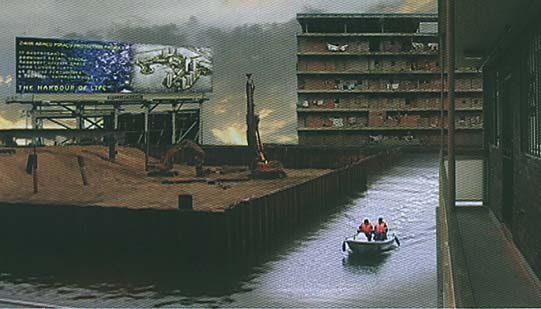
Anja Kirschner, Polly II: Plan for a Revolution in Docklands, 2006, still from a color video, 30 minutes.
But here again, the radical change in art's relationship to the public leads us back to commerce. While this year The Guardian proclaimed that knowledge of art has become de rigueur for "anyone who wants to think of themselves as remotely on the cultural radar," such statements are part of a more general trend, identified by writer Anthony Davies, toward the cultivation of a "New Art Consumer" in the UK. * After years of lessons in art collecting and connoisseurship provided by numerous public art institutions, for example, a major push to encourage art buying has been initiated by the government's Arts Council, which is now offering an interest-free lending program for art buyers, called "Own Art."'The scheme helps those who normally would not have the cash to buy art, but it must also be seen in the context of major governmental restructuring in arts funding, since, like other current arts policy changes, it shifts the state's responsibility for supporting individual art projects onto private sources�in this case, the commercial art market. The enormous presence of the Frieze Art Fair is undoubtedly part of this shift. It was, after all, on the occasion of the fair last October that The Guardian published the above observation, along with instructions to first-time art buyers on how to collect; the paper also ran a feature discussing how many young professionals are leaving the public arts sector for the creative freedom of commercial galleries. With the tides appearing to turn so dramatically, it is no wonder that the centripetal pull of the Frieze Art Fair's black hole exerts itself year-round. This year saw unprecedented prices under the Frieze tent and a feeling of increasing citywide dominance. For instance, flyers for a Frieze-commissioned architecture tour by Bronstein were handed out with Oyster cards. The numerous talks, commissions, Resonance FM radio programs, and screenings by the LUX film and video archive attested to the fair's total-absorption policy. In this context, the "art fair art" so prevalent at Frieze, calculated to give the rapacious market stimulating doses of indigestion, seemed mainly like so many gestures indicating that critique in our time is always already a complicitous tool of the market.
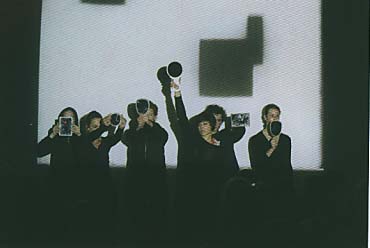
K2 Aufbau Organisation, Bohemian Lobotomy, 2006. Performance view, Frieze Art Fair, London, 2006. Photo: Polly Braden.
Yet despite the operative assumption that all possible aesthetico-political challenges to the fair will produce, at best, only a fleeting market fluctuation, something more than that emerged from this year's welter of artist's projects. As part of the LUX screening series, K2 Aufbau Organisation (k2ao, a collaborative out of the Kunstakademie M�nchen) presented Bohemian Lobotomy, 2006, a work made as a specific response to Frieze that wasn't smooth and spectacular like value-adding "art fair art." Bohemian Lobotomy is a film-performance that came out of the group's research on Munich's bohemian period, which culminated in the Munich Soviet Republic of 1919. Superficially, the film echoes the appropriation theme of the Tate Triennial, assembling fragments from old film, theater, and literature into deftly orchestrated, disjunctive, uncomfortable combinations of live performance, film strategies, and polemic texts. Structured as a series of vignettes orbiting this period of revolutionary aesthetic and spiritual ideas, but also referencing Frieze, Art Basel, and Oktoberfest, the work's power resides, perhaps, in its departure from the premise that the early twentieth-century bohemians and their critical outsider position vis-a-vis bourgeois society now provide the model and lifestyle for today's status quo. Theorists have alternately identified this paradox as "commodified dissent" and as the recuperation of artistic critique within the "new spirit of capitalism." Strikingly, the historical theater, music, and dance performances that the group reperforms often occur as mise en abyme: For instance, when an audience files into a theater within the film, in order to watch the film we are already watching�either within the film or through performances in the cinema� the duplication gives a sense of second-order remove, encoding a distance and self-reflexivity that implies critique, which in turn, crucially, brings us back to the absorption and corn-modification of the bohemia/avant-garde. At one point, live performers stand in front of the screen, holding up mirrors so as to reflect the beams of light from the film projector back onto the audience like spotlights, asking, at the same time, "Where are you?" and intoning the names of a series of dead political agitators and bohemians. The past is mirrored continuously and becomes a means to scrutinize the boho art fair audience, on whom it is dawning that they are implicated in the work's theme. Here the dead, the rev-enants of history, maintain their hold on the present and inform the present. But just as much appropriation serves as a kind of life support, if you will, for art, the centrality of bohemian marginality embodies another persistence�the way in which critical positions feed and reinforce the present system. Another vignette spoofs art fairs�two cartoon silhouettes of professional artists meet at the fair and deal each other blows while bragging about their recent shows and achievements. Growth, transformation, and undead states of art abound this year. Beware the zombies.
MELANIE GILLIGAN IS A LONDON-BASED ARTIST.
NOTES
- Anthony Davies, "Basic Instinct: Trauma and Retrenchment 2000-2004" (Mute, issue 29, Winter/Spring 2005; http://www.metamute.org). Mute has been crucial in fostering such debates since its inception in 1994.

